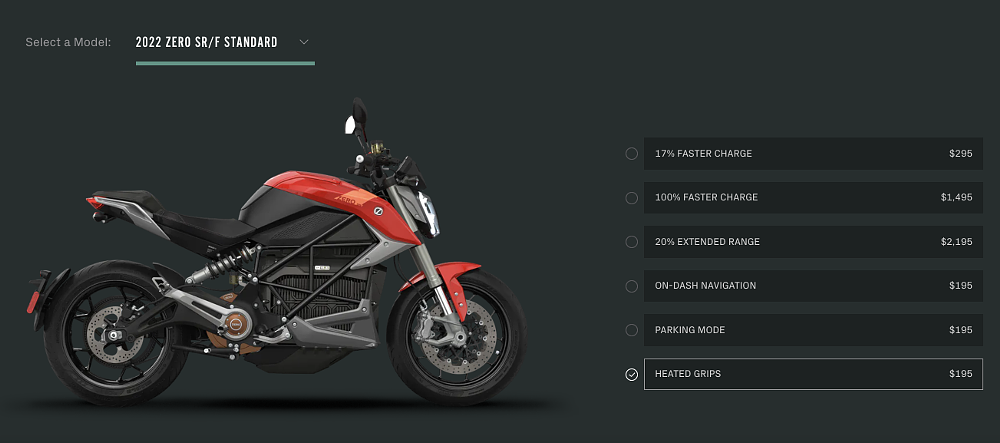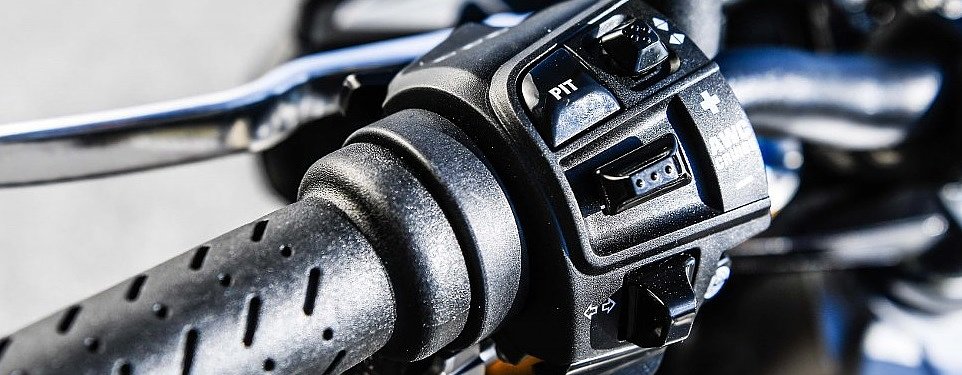For most of motorcycling history, riders got what they paid for at the dealership. That’s to say that an upgraded version of a base model had fancier parts, so it cost more.
On today’s vehicles, an alternative approach is on the rise, in which hard parts are the same across multiple versions of a model, and on base models some features or increased performance levels are locked out via software. Tesla comes to mind as the most prominent — and controversial — champion of this concept. Their customers can pay to unlock faster acceleration times, longer battery ranges, extra horsepower, and self-driving mode in various models. All the necessary hardware is already onboard. Just send Elon a payment, and the car can go faster/farther/”fully autonomous” with the flip of a virtual switch.
Recently, Zero announced a battery update with its new ZF 14.4+ and 15.6+ cells, which can deliver up to 17.3 kWh if the customer pays to unlock the extra range. (The “+” designation indicates an upgradable Zero battery.) Once again, the hardware for full range is already present in the battery. The bike just needs the software to utilize its full potential.

Zero didn’t stop there. Through the Cypher Store, owners can purchase Extended Range (15 to 20 percent more), Faster Charge Time (up to 100 percent), On-Dash Navigation, and Parking Mode (low-speed reverse) starting next year. The bikes do not need to go to a dealer to activate these features. When I priced out these features for a Zero SR/F Standard ($19,495), the Cypher Store listed 17 percent faster charging for $295, 100 percent faster charging for $1,495, 20 percent extended range for $2,195, navigation for $195, and $195 for Parking Mode. Strangely, heated grips could be added for $195 without a trip to the dealer, which means they’re including non-activated heating elements in base-model bikes. This structure is sure to upset some riders while appealing to others who prize customizability.
Pay-to-enable upgrades are hardly new to motorcycling, although Zero’s latest release is one of the most ambitious examples so far. Navigation and satellite radio are longstanding examples of built-in features that require payment to operate. Harley-Davidson and Indian, for example, will activate GPS functionality for a fee on some models with smart dashes. KTM’s Quickshifter+ is an improved version of their standard quickshifter that requires payment to a dealer to activate; it uses existing hardware and electronics with no physical modifications.

BMW’s F 750 and F 850 motorcycles have the same engines but different outputs due to their ECU/DME. Obviously, the punchier 850 is more expensive, even though the 750’s mill has the potential to deliver the same performance. Ride modes are another frequent feature to find behind paywalls on modern motorcycles. Even so, Zero’s Cypher Store upgrades feel like the beginning of a new generation for unlockable tech. Regardless of how you or I might feel about this transition, it’s happening, and it’s reasonable to anticipate more pay-to-enable features on future models from all corners of motorcycling.
To the rider who says, “I hate this”
You aren’t alone. Pay-to-enable technology rubs many folks the wrong way. If all the hardware required to use the upgraded functions is already onboard, then why isn’t it being used? It's bought and paid for with the motorcycle, right? The code to run those features may even be onboard, too. Some see untapped potential as “ransomed” inside a motorcycle. Besides, what manufacturer would intentionally handicap a motorcycle? Why not include, for example, the fastest possible charging time on an electric bike if the parts that make it possible are already present?
To the rider who says, “I love this”
You aren’t alone. Why pay for what you don’t need? And if you decide that you do want an upgrade later in ownership, it’ll be easy enough to add. Pay-to-enable models are used for all kinds of motorcycle features, and it would be impractical to create a different submodel for each one. Some see the à la carte upgrades as much-needed customizability in a world of complex motorcycles. Besides, somebody’s got to pay the engineers who dreamed up all these fancy features. Pony up if you want them, or simply forego them if you don’t.
Base-up or premium-down?
For or against, this shift probably feels strange to us because it turns the traditional model on its head. Consider this: Traditional motorcycle model lines started with a base model, then went up from there. It would take more than a few keystrokes to convert a base bike into a top-trim model, and vice versa, because physical differences set the models apart from each other.
The pay-to-enable model is arguably the opposite, especially for Zero. Digital differences, not physical ones, separate one model from another. The range starts at the top with all features enabled, and the bikes below that flagship are defined by what they are missing. Unorthodox, yes, but that hasn’t slowed Tesla’s ascent in recent years. Zero has been called “the Tesla of motorcycles” ad nauseum, so is anyone surprised when they follow in Tesla’s footsteps?
Expect more pay-to-enable features as advancements in motorcycle technology are increasingly driven by screens, sensors, and software. Electric motorcycles in particular will need all the help they can get in the coming decades.













